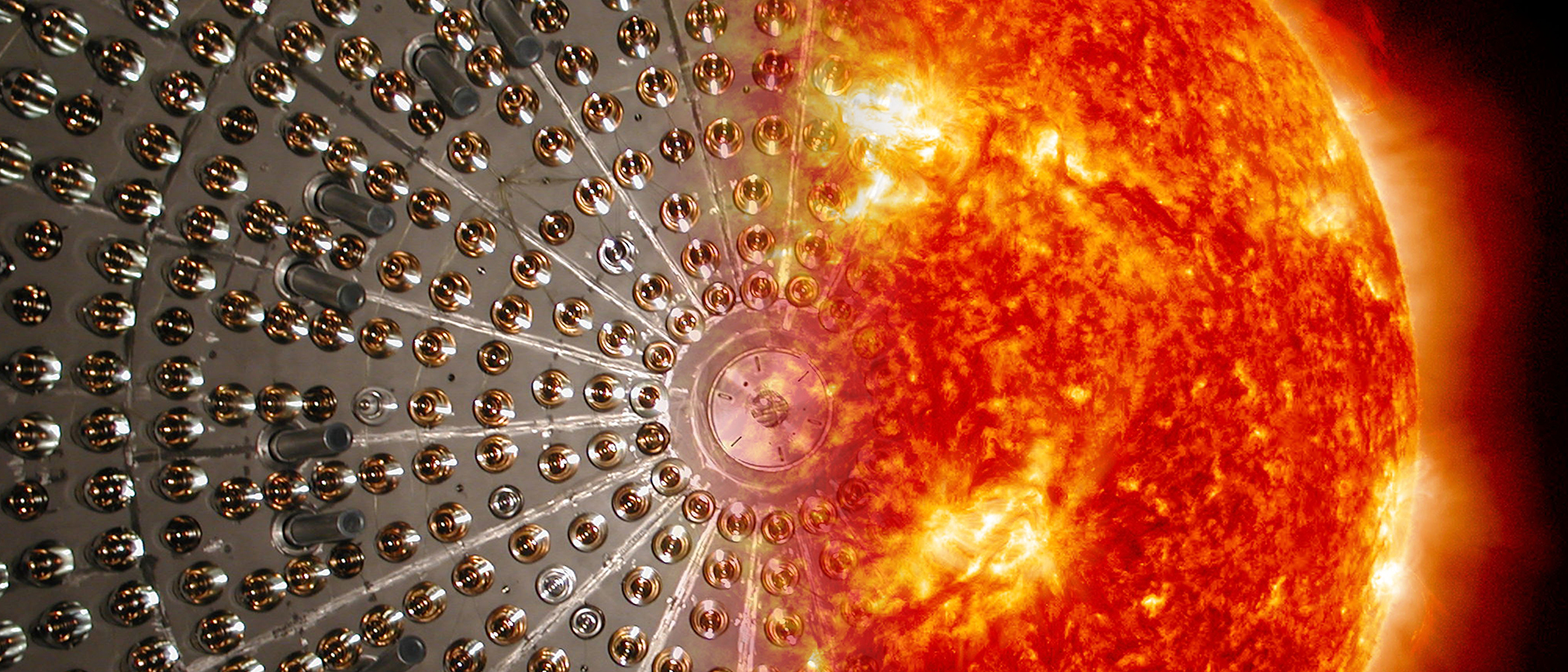
[ad_1]
The Borexino Experiment research team was able for the first time to detect neutrinos from the sun’s second fusion process, the Carbon Nitrogen Oxygen cycle (CNO cycle). This means that now all theoretical predictions about how energy is generated inside the sun have also been experimentally verified. The findings are the result of years of dedicated efforts to control background sources in the CNO neutrino energy range.
The sun generates its energy by fusing hydrogen into helium. This happens in two ways: Most of the energy, about 99 percent, comes from a fusion and decay process that begins with two hydrogen nuclei and ends with a helium nucleus. This process is referred to as the pp (proton-proton) chain.
The rest of the energy results from a cycle in which a total of four hydrogen nuclei eventually combine to form a helium core with the help of carbon, nitrogen and oxygen as catalysts and intermediates. In stars larger than our Sun, most of the energy generated is generated by this second process, called the CNO process due to the involvement of carbon, nitrogen and oxygen.
Evidence of the merger cycle postulated in the 1930s
This second cycle was postulated as another energy source of the sun in the 1930s by physicists Hans Bethe and Carl Friedrich von Weizsäcker independently of each other, but it has not been possible to confirm this experimentally until now.
Physicists working on the Borexino experiment in the underground laboratory under the Italian Gran Sasso massif have now for the first time succeeded in demonstrating the presence of this cycle on the basis of the neutrinos it produces.
Several years ago the Borexino Experiment team presented for the first time a comprehensive investigation into the fusion processes of the pp chain using its neutrinos. Scientists from the physics department of the Technical University of Munich (TUM) were centrally involved in both measurement processes.
Interference has obscured the signal until now
Because of their energy distribution, the neutrinos of the CNO cycle were difficult to distinguish from those generated by the radioactive decay of tiny traces of other elements. Mainly bismuth-210 from traces of impurities on the detector wall surface was responsible for hiding the CNO cycle signals.
Due to the convection movements, these contaminants have entered the detector liquid. To eliminate the disturbance, it was necessary to stop the convection inside the Borexino detector, which is technically extremely elaborate.
“For a long time I thought that it would never be possible to make this measurement successfully,” says Stefan Schönert, professor of experimental astroparticle physics at TU Munich. “But six years of hard work paid off and now we have demonstrated for the first time the presence of the CNO neutrino signal.”
New evidence on the metallicity of the sun
These results not only confirm the theoretical predictions on the two sun’s fusion processes, but also provide evidence for the metallicity of the sun, i.e. the concentration levels of nuclei heavier than hydrogen and helium.
Different methods of astrophysics investigation have generated different results in the past years. “The new Borexino results now support observations with higher metallicity values,” says prof. Lothar Oberauer of TUM.
This is particularly important in the context of the fundamental properties of stars such as their size, temperature, brightness and duration, which are determined by the degree of metallicity. Understanding the chemical composition of the sun is therefore essential to understanding the properties of all stars.
.
[ad_2]
Source link